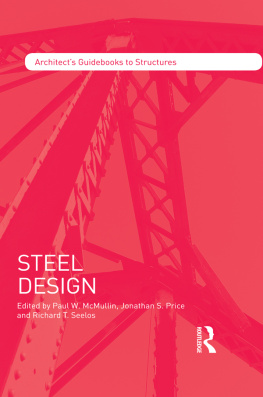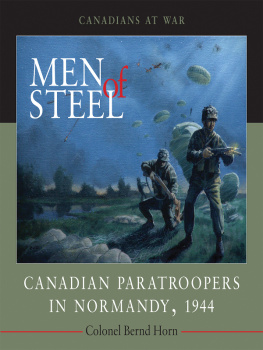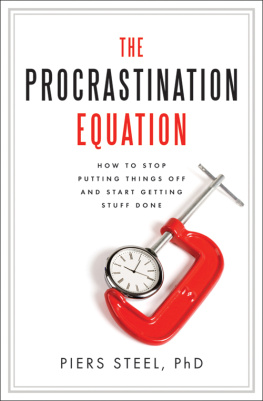high growths of iron, slender, strong, light, splendidly uprising toward clear skies.
W ALT W HITMAN Mannahatta, 1881
O nly a poetmaybe only Walt Whitman himself, for that mattercould have described the skyline of Manhattan in 1881 with such delirious hyperbole. High growths of iron? The highest point on the island in 1881 was the steeple of Trinity Church, built in 1846 and rising 284 feet over Broadway. The vast majority of secular buildings rose just four or five stories, and the tallest rose a mere ten stories. Even these were remarkably chunky structures, built of thick masonry or dense cast iron, hardly light or slender. They soared like penguins.
But if Whitmans description seems a bit overwrought by todays standards, it was also prophetic. New York was on the verge of enormous physical change in 1881. The main evidence of this stood in the East River, in the form of two stone towers rising from the currents, one near Manhattans shore, the other near Brooklyns. The towers were high, startlingly high, each looming 276 feet over the river; but it wasnt the towers that made the Brooklyn Bridge so remarkable. It was the great steel cables draped between them, and the steel beams suspended from the harp-like web of steel wires. This was the part of the bridge that really mattered, the part that made it a bridge, unleashed from earth if not the laws of physics: steel.
Americans did not invent steel, but steel, in many ways, invented twentieth-century America. Cars, planes, ships, lawn mowers, office desks, bank vaults, swing sets, toaster ovens, steak knivesto live in twentieth-century America was to live in a world of steel. By mid-century, 85 percent of the manufactured goods in the United States contained steel, and 40 percent of wage earners owed their jobs, at least indirectly, to the steel industry. Steel was everywhere. Most evidently, and most awesomely, it was in the cities, ascending hundreds of feet above the earth in the form of steel-frame skyscrapers.
The first skyscrapers began to appear in Chicago in the mid-1880s, a year or so after the Brooklyn Bridge opened to traffic. The new buildings turned the old rules of architecture inside out: instead of resting their weight on thick external walls of brick or stone, they placed it on an internal frameworka skeletonof steel columns and beams. The effect was as if buildings had evolved overnight from lumbering crustaceans into lofty vertebrates. Walls would still be necessary for weather protection and adornment, but structurally theyd be almost incidental. The steel frame made building construction more efficient and more economical, and it had a less pragmaticyet more significanteffect. It gave humans the ability to rise as high as elevators and audacity could carry them.
The steel-frame skyscraper was born in Chicago, but New York is where it truly came of age. By 1895, Manhattans summit had doubled to 20 stories, then it doubled again, then againall before 1930 and all made possible by steel. And as skyscrapers sprang up from the bedrock, new steel bridges reached out to Brooklyn, to Queens, to the mainland across the Hudson, connecting the city so seamlessly to the world beyond that New Yorkers would soon forget they lived on an island.
In 1970, the summit of the city rose one last time, to 110 stories, on the stacked columns of two identical buildings in lower Manhattan. A stones throw from Trinity Church and a short stroll from the Brooklyn Bridge, the twin towers of the World Trade Center seemed to herald a remarkable new age of building. They were so highten times as high as the high growths of iron Walt Whitman admired in 1881they literally disappeared, some days, into the clouds.
The astonishing ascendancy of New York Citys skyline has been recounted before, often and well. Several of its iconsthe Flatiron Building, the Woolworth Building, the Chrysler Building, the Empire State Buildinghave achieved a kind of celebrity usually reserved for Hollywood film stars and heads of state, while their architects and builders have basked in reflected glory. Strangely, though, one group of key players is usually neglected in the telling of the skylines drama: the men who risked the most and labored the hardest to make it happen. Called ironworkers, or, more specifically, structural ironworkers, these are the brave and agile men who raised the steel into the sky: the generations of Americans and Newfoundlanders and Mohawk Indians who balanced on narrow beams high above the city to snatch steel off incoming derricks or crane hooks and set it in placewho shoved it, prodded it, whacked it, reamed it, kicked it, shoved it some more, swore at it, straddled it, pounded it mercilessly, and then riveted it or welded it or bolted it up and went home. That was on a good day. On a bad day, they went to the hospital or the morgue. Steel is an unforgiving material and, given any chance, bites back. It was a lucky ironworker who made it to retirement without losing a few fingers or breaking a few bones. And then, of course, there was always the possibility of falling. Much ironwork was done hundreds of feet in the air, where a single false step meant death. Steel was the adversary that made them sweat and bleed. It was gravity, though, that usually killed them.
This is the story of the ironworkers who built New Yorkand are building it still. Without idealizing them, its fair to say that they are a remarkable breed. What makes them remarkable isnt just their daring or acrobatics; its their whole way of life. History lives through them by way of their genealogies. Many come from a close-knit group of families, multigenerational dynasties of New York ironworkers. They are the sons and grandsons and great-grandsons of the men who built the icons of the past. They are the Montours, the Deers, the Diabos, and the Beauvais from the Kahnawake Mohawk Reserve near Montreal. They are the Kennedys, the Lewises, the Doyles, the Wades, and the Costellos from a small constellation of seaside towns in Newfoundland. They are the Collinses, the Donohues, the Johnsons, the Andersons, and the McKees, whose grandfathers immigrated to New York from Germany and Scandinavia and Ireland. When a young man from one of these families looks out over the skyline and says, My family built this city, his brag is deserved.
Todays ironworkers are, in many respects, cultural relics. They live at odds with the prevailing trends of twenty-first-century American culture, or at least American culture as prescribed by glossy magazines and morning television shows. They drink too much, smoke too much, and practice few of the civilities of the harassment-free workplace. As gender roles become less defined, the ironworkers, virtually all of them men, continue to revel in a cocoon of full-blown masculine camaraderie. Education levels have increased across the board in America, but the education of most ironworkers stops at high school. Unionism is in decline, with just 11 percent of American workers still enrolled in labor unions at the start of the twenty-first century, but New York ironworkers remain avid and unabashed unionists. The labor force has turned en masse from manual work to high-tech, sedentary work in ergonomically correct settings, but ironworkers continue to depend on muscle and stamina and a capacity to endure a certain amount of pain. And as Americans become increasingly averse to risk, ironworkers continue to risk their lives every day they go to work.








